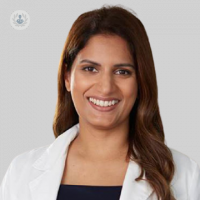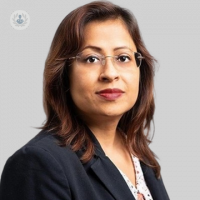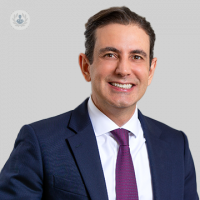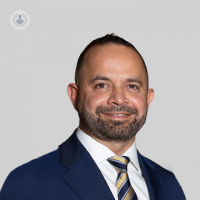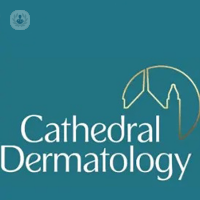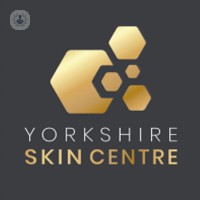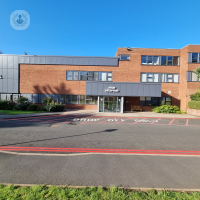What is anti-ageing?
Anti-ageing is a treatment to delay or stop the ageing process. There are many treatments that can help combat ageing, using both surgical and non-surgical procedures. Damage from too much sun exposure can take its toll and be responsible for most of the visible ageing of the skin. As well as photo-ageing, repeatedly spending time in the sun with lack of sunscreen can lead to skin cancer alongside damage.
There is no treatment that deals with all skin issues and that will have the same result on every individual. A dermatologist can determine what would be the best procedure and whether a combination of treatments is needed.
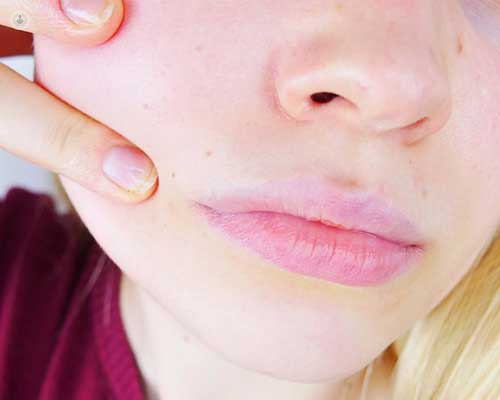
What are the signs of ageing?
Ageing can take its toll in many different ways, including:
- Expression lines and wrinkles
- Loss of fat volume
- Loss of bone structure
- Gravity
- Sun damage – the worst offender
What are the different types of nonsurgical anti-ageing treatments?
There are treatments that can smooth and tighten the skin, adding volume replacement and wrinkle reduction. However, a non-surgical procedure is going to provide the same lifting results as surgery, it will leave you looking fresher and rejuvenated. The options include:
- Injectables – injecting filler materials under the skin can fill in folds, smile and laugh lines and create fuller lips and give more volume to hollow cheeks and eyes. These include dermal fillers, collagen, hyaluronic acid, synthetic fillers and fat transfers.
- Botulinum toxin – this temporarily paralyses muscles when injected and prevents the skin from creasing and making wrinkles.
- Liquid facelift – a combination of muscle relaxers, such as Botox, and dermal fillers is known as a liquid facelift.
- “Face-melting” – The chemical deoxycholic acid that is found in the body can be injected into the body to reduce body fat in areas such as the double chin.
- Chemical peel – glycolic, lactic or trichloracetic acid is applied to the skin to exfoliate the top layer so that dead skin cells peel off. This helps reduce fine lines, small scars and sun damaged skin.
- Dermal rolling – A cylinder covered in tiny needles is rolled over the skin. The needles stimulate collagen production and the procedure treats acne scarring, lines and wrinkles.
- Microdermabrasion – Usually carried out at a spa, fine crystals or sand are used on the face to remove dead skin cells. The procedure is not as effective but skin texture is improved.
- Lasers – these are used for moderate lines and wrinkles and can improve skin tightness. There are many different laser treatments available such as ablative lasers that destroy the tissue, which is replaced by new healthy tissue. Non-ablative lasers stimulate the collagen and leave it intact. Intense Pulsed Light (IPL) is a non-skin-removing technique that softens lines, wrinkles and can help some scars to fade.
What are the different types of surgical anti-ageing procedures?
Depending on the level of changes that a patient would like to see, there are different surgical procedures such as:
- A traditional facelift – an incision is made in the hairline at the temples and continues around the ear and ends at the lower scalp. Fat can be sculpted or redistributed from the face, jowls and neck. Skin is placed over the uplifted contours.
- A limited incision facelift – also known as a “mini lift”, is usually for patients with less skin relaxation as the results are not as rejuvenating as with a full facelift.
- A neck lift - a neck lift addresses the sagging jowls, neck skin and double chin. The procedure begins in front of the earlobe and wraps behind the ear and ends in the posterior hair behind the ear.
Anti-ageing treatments
Dr Ophelia Veraitch - Dermatology
Created on: 11-13-2012
Updated on: 05-29-2024
Edited by: Conor Dunworth
What is anti-ageing?
Anti-ageing is a treatment to delay or stop the ageing process. There are many treatments that can help combat ageing, using both surgical and non-surgical procedures. Damage from too much sun exposure can take its toll and be responsible for most of the visible ageing of the skin. As well as photo-ageing, repeatedly spending time in the sun with lack of sunscreen can lead to skin cancer alongside damage.
There is no treatment that deals with all skin issues and that will have the same result on every individual. A dermatologist can determine what would be the best procedure and whether a combination of treatments is needed.

What are the signs of ageing?
Ageing can take its toll in many different ways, including:
- Expression lines and wrinkles
- Loss of fat volume
- Loss of bone structure
- Gravity
- Sun damage – the worst offender
What are the different types of nonsurgical anti-ageing treatments?
There are treatments that can smooth and tighten the skin, adding volume replacement and wrinkle reduction. However, a non-surgical procedure is going to provide the same lifting results as surgery, it will leave you looking fresher and rejuvenated. The options include:
- Injectables – injecting filler materials under the skin can fill in folds, smile and laugh lines and create fuller lips and give more volume to hollow cheeks and eyes. These include dermal fillers, collagen, hyaluronic acid, synthetic fillers and fat transfers.
- Botulinum toxin – this temporarily paralyses muscles when injected and prevents the skin from creasing and making wrinkles.
- Liquid facelift – a combination of muscle relaxers, such as Botox, and dermal fillers is known as a liquid facelift.
- “Face-melting” – The chemical deoxycholic acid that is found in the body can be injected into the body to reduce body fat in areas such as the double chin.
- Chemical peel – glycolic, lactic or trichloracetic acid is applied to the skin to exfoliate the top layer so that dead skin cells peel off. This helps reduce fine lines, small scars and sun damaged skin.
- Dermal rolling – A cylinder covered in tiny needles is rolled over the skin. The needles stimulate collagen production and the procedure treats acne scarring, lines and wrinkles.
- Microdermabrasion – Usually carried out at a spa, fine crystals or sand are used on the face to remove dead skin cells. The procedure is not as effective but skin texture is improved.
- Lasers – these are used for moderate lines and wrinkles and can improve skin tightness. There are many different laser treatments available such as ablative lasers that destroy the tissue, which is replaced by new healthy tissue. Non-ablative lasers stimulate the collagen and leave it intact. Intense Pulsed Light (IPL) is a non-skin-removing technique that softens lines, wrinkles and can help some scars to fade.
What are the different types of surgical anti-ageing procedures?
Depending on the level of changes that a patient would like to see, there are different surgical procedures such as:
- A traditional facelift – an incision is made in the hairline at the temples and continues around the ear and ends at the lower scalp. Fat can be sculpted or redistributed from the face, jowls and neck. Skin is placed over the uplifted contours.
- A limited incision facelift – also known as a “mini lift”, is usually for patients with less skin relaxation as the results are not as rejuvenating as with a full facelift.
- A neck lift - a neck lift addresses the sagging jowls, neck skin and double chin. The procedure begins in front of the earlobe and wraps behind the ear and ends in the posterior hair behind the ear.
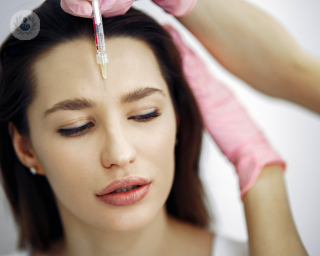

How does Botox™ really work and how can I avoid the ‘frozen look’?
By Mr Giovanni Ferrando
2024-11-20
If you are considering getting Botox™ but are concerned that your face is going to look unnatural or ‘frozen’, you shouldn’t worry. When Botox™ is administered correctly and by an experienced professional, it can gently rejuvenate your face and leave you with a naturally youthful appearance. Mr Giovanni Ferrando, one of our top consultant plastic and reconstructive surgeons based in London and Genoa, Italy, explains more. See more
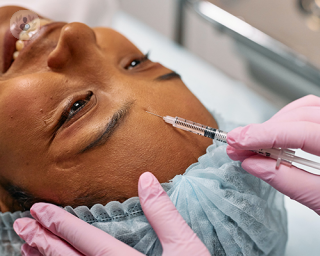

Facial rejuvenation: what are the best treatments?
By Dr Anne Gormley
2024-11-19
Dr Anne Gormley is a leading dental practitioner and facial aesthetics clinician. In her latest article, Dr Gormley explains some facial rejuvenation and anti-aging treatments such as micro-needling, chemical peels, and dermal fillers. See more


Thermage FLX: Understaning this cutting-edge skin tightening treatment
By Dr Tracy Xu
2024-11-19
In her latest online article, renowned consultant advanced aesthetic medicine specialist Dr Tracy Xu offers her expert insight into the revolutionary new anti-ageing treatment, Thermage FLX. She answers her patients’ most frequently asked questions, revealing the numerous benefits of this treatment. See more


Radiofrequency treatment for the face: how it works
By Mr Nizar Hamadeh
2024-11-19
Non-surgical facial rejuvenation is becoming increasingly popular, with radiofrequency treatment being one of the many new treatment options on offer. But does it really work, and are there any disadvantages? In this article we interviewed leading plastic surgeon Mr Nizar Hamadeh to find out what radiofrequency can be used for and who is most suitable. See more
Experts in Anti-ageing treatments
-
Dr Justine Hextall
DermatologyExpert in:
- Skin cancer
- Acne
- Rosacea
- Anti-ageing treatments
- Paediatric dermatology
- Skin cancer on face
-
Dr Moumita Chattopadhyay
DermatologyExpert in:
- Rosacea
- Eczema
- Acne
- Skin cancer
- Moles
- Lichen sclerosus
-
Dr Ariel Haus
DermatologyExpert in:
- Skin cancer
- Botulinum toxin (Botox™)
- Anti-ageing treatments
- Acne
- Cosmetic dermatology
- Dermal fillers
-
Dr Sherif El Wakil
Aesthetic medicineExpert in:
- Non-surgical penis enhancement
- Vaginal dryness
- Anti-ageing treatments
- Laser vaginal rejuvenation
- Erectile dysfunction
- Female sexual dysfunction
-
Dr Husham Al-Shather
Aesthetic medicineExpert in:
- Lip augmentation
- Liquid facelift
- Botulinum toxin (Botox™)
- Dermal fillers
- Anti-ageing treatments
- Facelift
- See all

Cathedral Dermatology
Cathedral Dermatology
88-91 Academy St
No existe teléfono en el centro.
By using the telephone number provided by TOP DOCTORS, you automatically agree to let us use your phone number for statistical and commercial purposes. For further information, read our Privacy Policy
Top Doctors

Yorkshire Skin Centre
Yorkshire Skin Centre
1 Sizers Court, Yeadon
No existe teléfono en el centro.
By using the telephone number provided by TOP DOCTORS, you automatically agree to let us use your phone number for statistical and commercial purposes. For further information, read our Privacy Policy
Top Doctors

The Priory Hospital - part of Circle Health Group
The Priory Hospital - part of Circle Health Group
Priory Road, Edgbaston, Birmingham B5 7UG
No existe teléfono en el centro.
By using the telephone number provided by TOP DOCTORS, you automatically agree to let us use your phone number for statistical and commercial purposes. For further information, read our Privacy Policy
Top Doctors
-
Cathedral Dermatology
88-91 Academy St, BelfastExpert in:
- Acne
- Skin Cancer
- Dermatitis
- Dermatology
- Clinical Dermatology
- Surgical Dermatology
-
Yorkshire Skin Centre
1 Sizers Court, Yeadon, LeedsExpert in:
- Dermatology
- Clinical Dermatology
- Cosmetic Dermatology
- Facial aesthetics
-
The Priory Hospital - part of Circle Health Group
Priory Road, Edgbaston, Birmingham B5 7UG, EdgbastonExpert in:
- Cancer
- General Surgery
- Orthopaedic surgery
- Thoracic Surgery
- Obstetrics and Gynaecology
- Urology
- See all
- Most viewed diseases, medical tests, and treatments
- Hormone therapy
- Migraine
- Joint pain
- Nutrition
- Weight loss injections
- Endermologie
- Polynucleotides
- Endovenous laser treatment (EVLA)
- Minimal access surgery (keyhole surgery)
- Head and neck cancer
